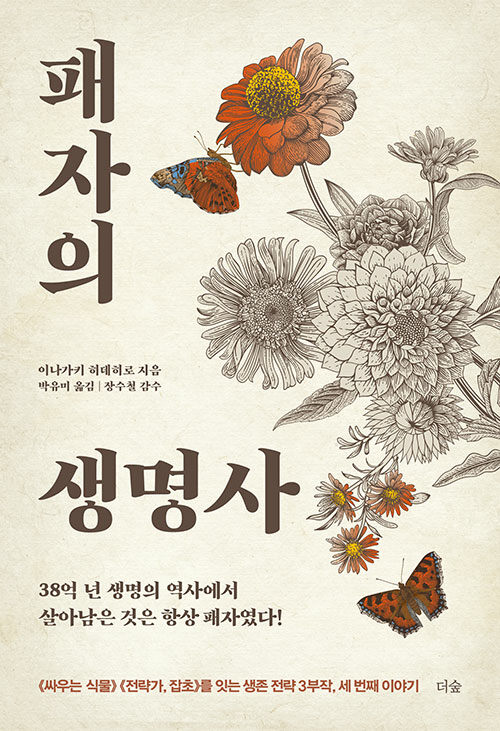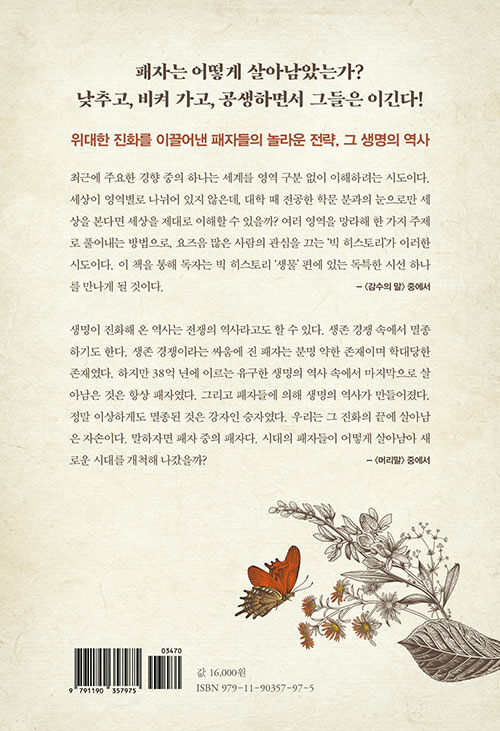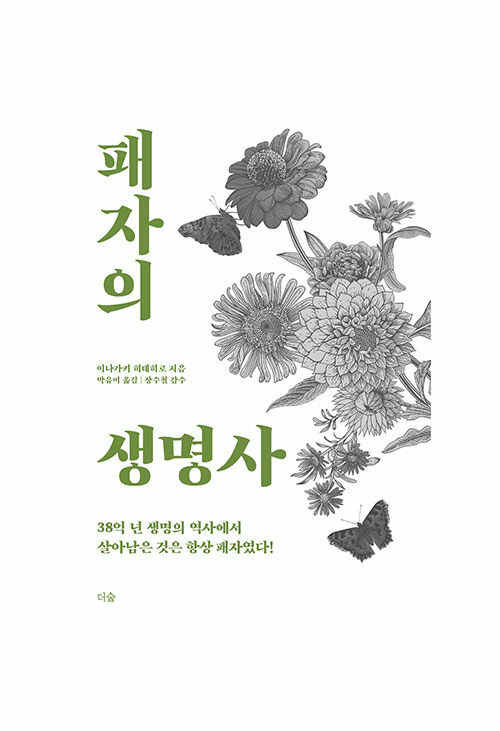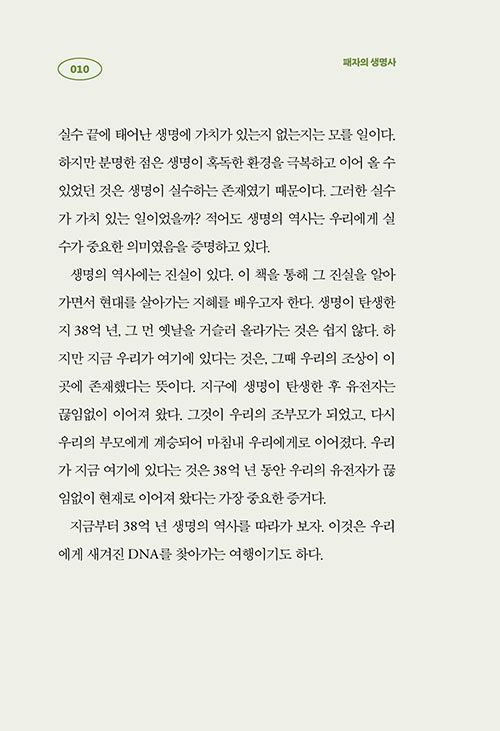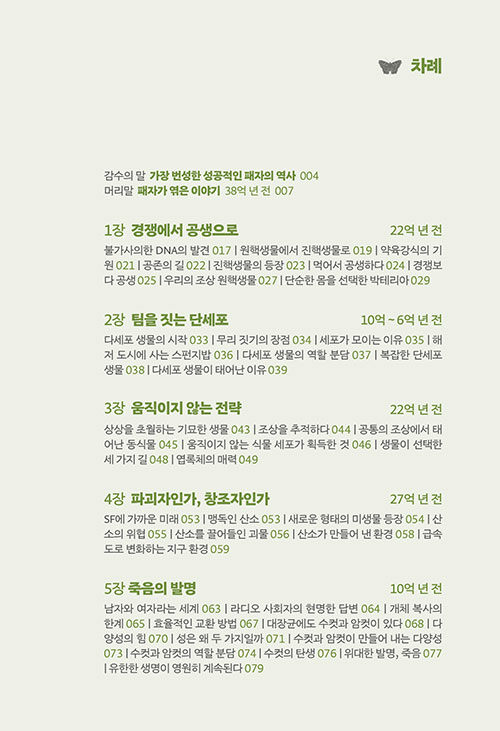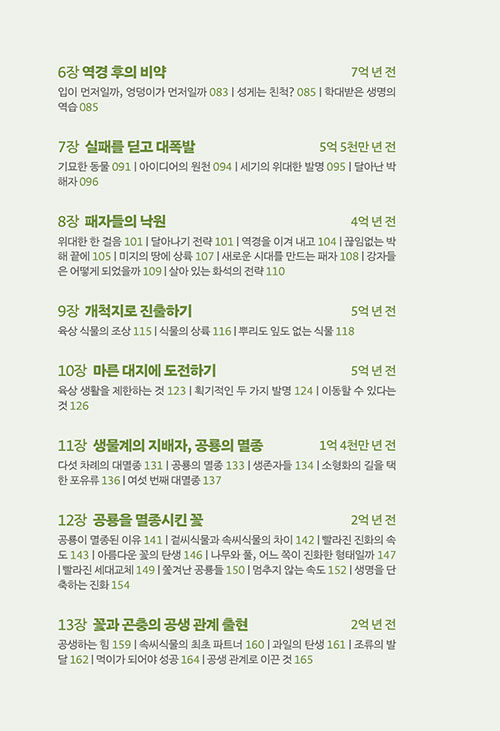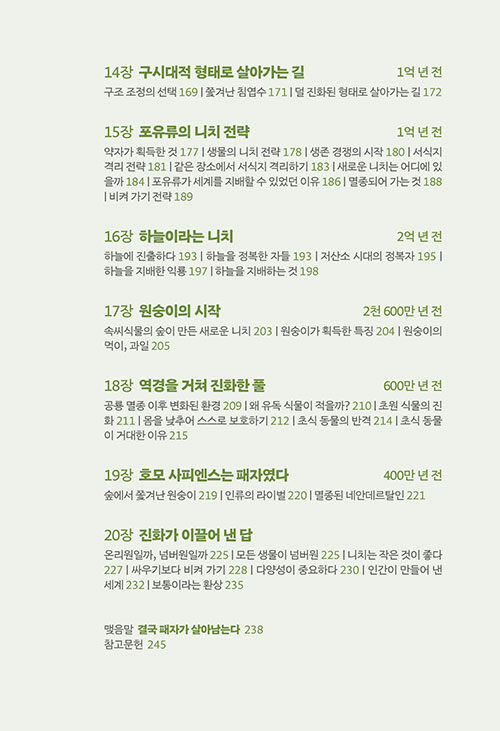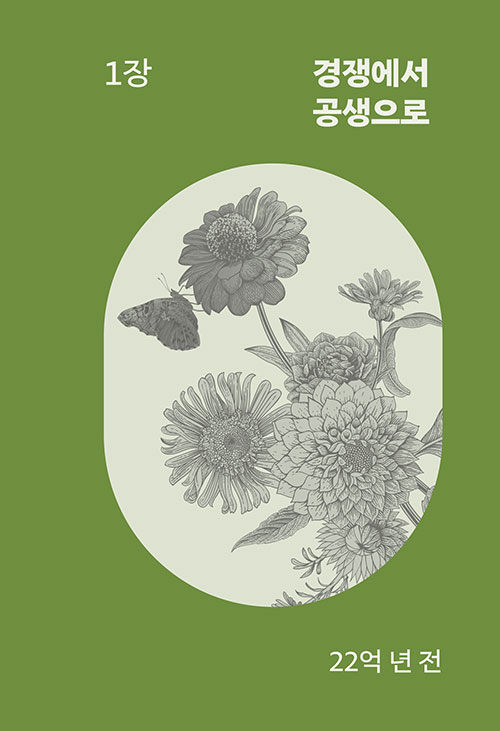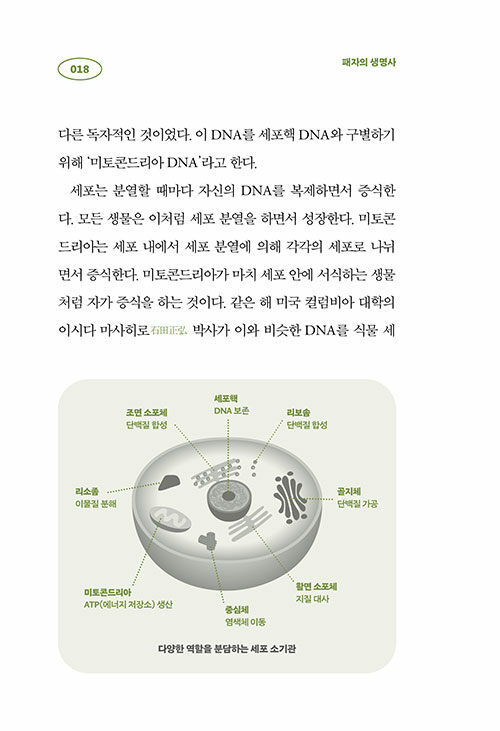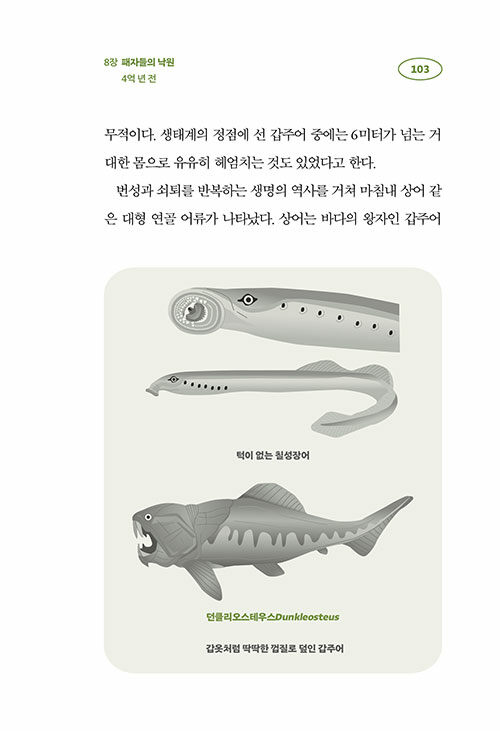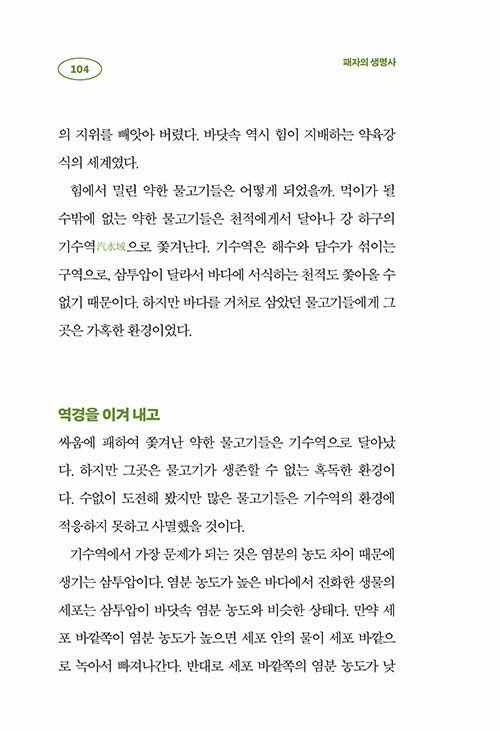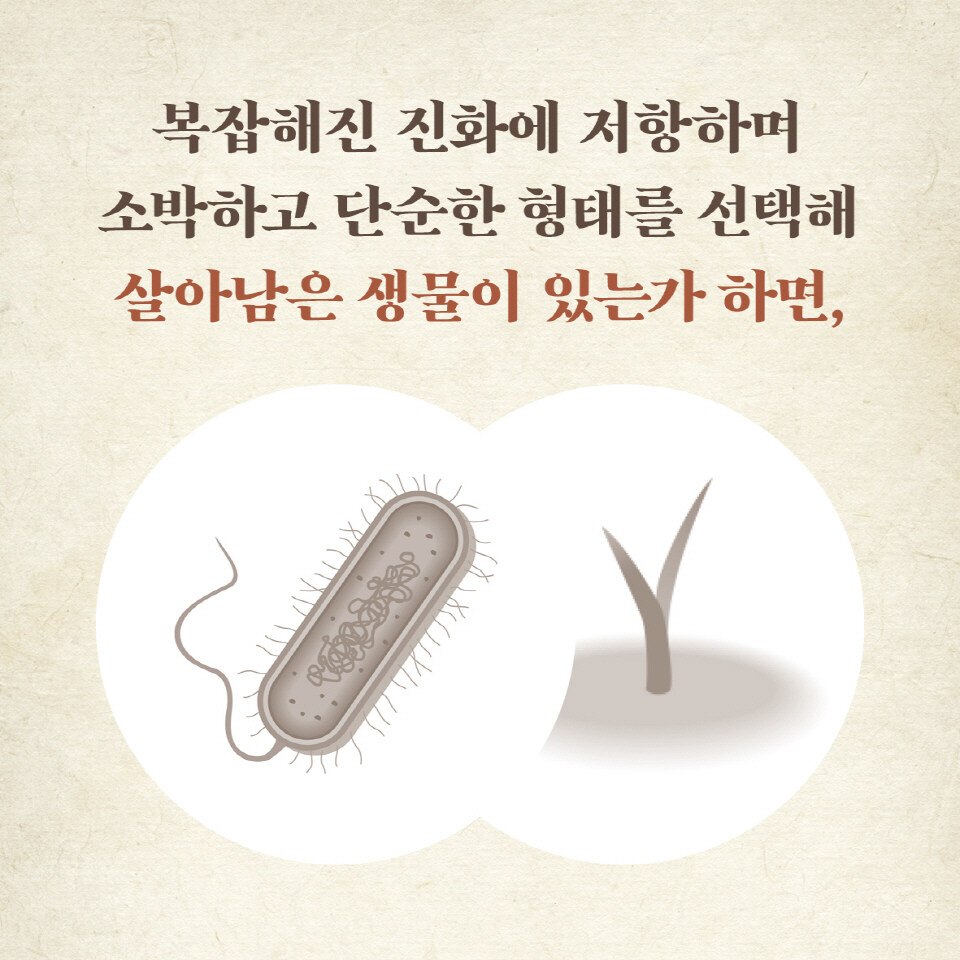A History of the World in 100 Objects
| A History of the World in 100 Objects | |
|---|---|
| Presentation | |
| Format | Audio |
| Production | |
| Audio format | MP3 |
| No. of episodes | 103 |
| Publication | |
| Provider | BBC |
| Related | |
| Website | http://www.bbc.co.uk/programmes/b00nrtd2 |

A History of the World in 100 Objects was a joint project of BBC Radio 4 and the British Museum, consisting of a 100-part radio series written and presented by British Museum director Neil MacGregor. In 15-minute presentations broadcast on weekdays on Radio 4, MacGregor used objects of ancient art, industry, technology and arms, all of which are in the British Museum's collections, as an introduction to parts of human history. The series, four years in planning, began on 18 January 2010 and was broadcast over 20 weeks.[1] A book to accompany the series, A History of the World in 100 Objects by Neil MacGregor, was published by Allen Lane on 28 October 2010.[2] The entire series is also available for download along with an audio version of the book for purchase. The British Museum won the 2011 Art Fund Prize for its role in hosting the project.
In 2016, a touring exhibition of several items depicted on the radio programme, also titled A History of the World in 100 Objects, travelled to various destinations, including Abu Dhabi (Manarat Al Saadiyat), Taiwan (National Palace Museum in Taipei), Japan (Tokyo Metropolitan Art Museum in Tokyo, Kyushu National Museum in Daizafu, and Kobe City Museum in Kobe), Australia (Western Australian Museum in Perth and National Museum of Australia in Canberra), and China (National Museum of China in Beijing and Shanghai Museum in Shanghai).[3][4][5]
The ownership claims of the British Museum over some of these objects is highly contested, in particular those belonging to the Benin Bronzes and the Elgin Marbles, which are the subject of continued international controversy.[6]
Content[edit]

The programme series, described as "a landmark project",[7] is billed as 'A history of humanity' told through a hundred objects from all over the world in the British Museum's collection.
Accompanying the series is a website, described by The Guardian as "even more ambitious [than the radio series itself] that encourages users to submit items of their own for a place in world history", along with much interactive content, detailed information on all the objects featured in the radio programmes and links to 350 other museum collections across the UK.[9] The radio programmes are available on the website permanently for listening or downloading.
The museum has adapted exhibitions for the series by including additional easily identifiable plaques for the 100 objects with text based on the programme and adding a section to the gallery maps showing the location and numbers of the 100 objects.
On 18 January 2010, an hour-long special of The Culture Show on BBC2 was dedicated to the launch of the project.[10]
The first part of the series was broadcast on weekdays over six weeks between 18 January and 26 February 2010. After a short break, the series returned with the seventh week being broadcast in the week beginning 17 May 2010.[11] It then took another break in the middle of July and returned on 13 September 2010, running until the 100th object was featured on Friday 22 October 2010.
It has been repeated a number of times, mostly recently over the summer of 2021.
Reception[edit]
Maev Kennedy of The Guardian described the programme as "a broadcasting phenomenon", while Tim Davie, head of music and audio at BBC radio, commented that "the results have been nothing short of stunning", exceeding the BBC's wildest hopes for the programme. At the time of the writing of Kennedy's article, just before the start of the last week of the series, the radio broadcasts regularly had up to four million listeners, while the podcast downloads had totalled 10,441,884. Of these, just over half, 5.7 million, were from the UK. In addition, members of the public had uploaded 3,240 objects with the largest single contribution coming from Glasgow historian Robert Pool who submitted 120 objects all relating to the City of Glasgow, and other museums a further 1,610, and 531 museums and heritage sites across the UK had been mounting linked events – an unprecedented partnership, MacGregor said. Museums all over the world are now copying the formula, as thousands of visitors every day set out to explore the British Museum galleries equipped with the leaflet mapping the objects.[12]
Writing in The Independent, Philip Hensher described the series as "perfect radio", saying "Has there ever been a more exciting, more unfailingly interesting radio series than the Radio 4/British Museum venture, A History of the World in 100 Objects? It is such a beautifully simple idea, to trace human civilisations through the objects that happen to have survived. Each programme, just 15 minutes long, focuses on just one thing, quite patiently, without dawdling. At the end, you feel that you have learnt something, and learnt it with pleasure and interest. For years to come, the BBC will be able to point to this wonderful series as an example of the things that it does best. It fulfils, to a degree that one thought hardly possible any more, the BBC's Reithian agenda of improvement and the propagation of learning and culture."[13]
Dominic Sandbrook in The Telegraph said that the "joyously highbrow" series "deserves to take its place alongside television classics such as Kenneth Clark's Civilisation and Jacob Bronowski's The Ascent of Man."[14]
In 2019, 100 Histories of 100 Worlds in 1 Object was launched as a response to the original 100 Objects project.[15] Addressing critiques by the same project of the Radio 4 series that pointed to the programme's perceived failure [...] ‘[ to engage with the provenance and repatriation of objects]’,[16] especially those which were collected under colonial conditions of duress, the response project sought instead to democratize curatorial narratives with input from source and diaspora communities who hold long-standing relationships with objects now-held in museums.[17] The project aims to focus on voices from the “Global South” that the original series left out. Co-initiated and facilitated by Dr Mirjam Brusius and Dr Alice Stevenson, the project works collaboratively and has an editorial board with members from India, Namibia, Thailand, Ghana, Nigeria, Torres Strait Islands, Aotearoa, Jamaica, USA, Mexico and the United Kingdom.[18]
Objects[edit]
Making us human (2,000,000–9,000 BC)[edit]
"Neil MacGregor reveals the earliest objects that define us as humans."[19] First broadcast week beginning 18 January 2010.
| Image | Number | Object | Origin | Date | BBC website | BM website | Additional contributors |
|---|---|---|---|---|---|---|---|
 | 1 | Mummy of Hornedjitef | Egypt | 300–200 BC | BBC | BM | Amartya Sen, John Taylor |
 | 2 | Stone (basalt) chopping tool | Olduvai Gorge, Tanzania | 1.8–2 million years old | BBC | BM | Sir David Attenborough, Wangari Maathai |
 | 3 | Hand axe | Olduvai Gorge, Tanzania | 1.2–1.4 million years old | BBC | BM | Sir James Dyson, Phil Harding, Nick Ashton |
 | 4 | Swimming Reindeer from Montastruc rock shelter | France | 13,000 years old | BBC | BM | The Most Reverend Rowan Williams, Steve Mithen |
 | 5 | Clovis spear point | New Mexico, USA | 13,000 years old | BBC | BM | Michael Palin, Gary Haynes |
After the Ice Age: food and sex (9,000–3,000 BC)[edit]
"Why did farming start at the end of the Ice Age? Clues remain in objects left behind."[19] First broadcast week beginning 25 January 2010.
| Image | Number | Object | Origin | Date | BBC website | BM website | Additional contributors |
|---|---|---|---|---|---|---|---|
 | 6 | Bird-shaped pestle | Papua New Guinea | 4,000–8,000 years old | BBC | BM | Madhur Jaffrey, Bob Geldof, Martin Jones |
 | 7 | Ain Sakhri lovers | Israel | about 11,000 years old | BBC | BM | Marc Quinn, Ian Hodder |
 | 8 | Clay model of cattle | Egypt | about 3500 BC | BBC | BM | Fekri Hassan, Martin Jones |
 | 9 | Maya maize god statue | Honduras | AD 715 | BBC | BM | Santiago Calva, John Staller |
 | 10 | Jōmon pot | Japan | about 5000 BC | BBC | BM | Simon Kamer, Takashi Doi |
The first cities and states (4,000–2,000 BC)[edit]
"What happens as people move from villages to cities? Five objects tell the story."[19] First broadcast week beginning 1 February 2010.
| Image | Number | Object | Origin | Date | BBC website | BM website | Additional contributors |
|---|---|---|---|---|---|---|---|
 | 11 | King Den's sandal label | Egypt | about 2,985 BC | BBC | BM | Toby Wilkinson, Steve Bell |
| 12 | Standard of Ur | Iraq | 2600–2400 BC | BBC | BM | Lamia Al-Gailani, Anthony Giddens | |
| 13 | An Indus seal | Pakistan | 2600–1900 BC | BBC | BM | Richard Rogers, Nayanjot Lahiri | |
 | 14 | Jadeite axe | from the Alps, found in England | 4000–2000 BC | BBC | BM | Mark Edmonds, Pierre Petrequin |
 | 15 | Early writing tablet | Iraq | 3100–3000 BC | BBC | BM | Gus O'Donnell, John Searle |
The beginning of science and literature (1500–700 BC)[edit]
"4,000 years ago, societies began to express themselves through myth, maths and monuments."[19] First broadcast week beginning 8 February 2010.
| Image | Number | Object | Origin | Date | BBC website | BM website | Additional contributors |
|---|---|---|---|---|---|---|---|
 | 16 | Flood tablet | Iraq | 700–600 BC | BBC | BM | David Damrosch, Jonathan Sacks |
 | 17 | Rhind Mathematical Papyrus | Egypt | about 1550 BC | BBC | BM | Eleanor Robson, Clive Rix |
 | 18 | Minoan Bull-leaper | Crete | 1700–1450 BC | BBC | BM | Sergio Delgado, Lucy Blue |
 | 19 | Mold gold cape | Wales | 1900–1600 BC | BBC | BM | Mary Cahill, Marie Louise Sørensen |
 | 20 | Statue of Ramesses II | Egypt | about 1,250 BC | BBC | BM | Antony Gormley, Karen Exell |
Old world, new powers (1100–300 BC)[edit]
"Across the world new regimes create objects to assert their supremacy."[19] First broadcast week beginning 15 February 2010.
| Image | Number | Object | Origin | Date | BBC website | BM website | Additional contributors |
|---|---|---|---|---|---|---|---|
 | 21 | Lachish Reliefs | Iraq | 700–692 BC | BBC | BM | Paddy Ashdown, Antony Beevor |
 | 22 | Sphinx of Taharqa | Sudan | about 680 BC | BBC | BM | Zeinab Badawi, Derek Welsby |
 | 23 | Early Zhou dynasty gui ritual vessel | China | 1100–1000 BC | BBC | BM | Dame Jessica Rawson, Wang Tao |
 | 24 | Paracas Textile | Peru | 300–200 BC | BBC | BM | Zandra Rhodes, Mary Frame |
 | 25 | Gold coin of Croesus | Turkey | c. 550 BC | BBC | BM | James Buchan, Paul Craddock |
The world in the age of Confucius (500–300 BC)[edit]
"Can meanings hidden in friezes and flagons tell us as much as the writings of great men?"[19] First broadcast week beginning 22 February 2010.
| Image | Number | Object | Origin | Date | BBC website | BM website | Additional contributors |
|---|---|---|---|---|---|---|---|
 | 26 | Oxus Chariot model | Tajikistan | 500–300 BC | BBC | BM | Michael Axworthy, Tom Holland |
 | 27 | Parthenon sculpture: Centaur and Lapith | Greece | about 440 BC | BBC | BM | Mary Beard, Olga Palagia |
 | 28 | Basse Yutz Flagons | France | c. 450 BC | BBC | BM | Jonathan Meades, Barry Cunliffe |
 | 29 | Olmec stone mask | Mexico | 900–400 BC | BBC | BM | Carlos Fuentes, Karl Taube |
 | 30 | Chinese bronze bell | China | 500–400 BC | BBC | BM | Dame Evelyn Glennie, Isabel Hilton |
Empire builders (300 BC – AD 1)[edit]
"Neil MacGregor continues his global history told through objects. This week he is with the great rulers of the world around 2,000 years ago."[20] First broadcast week beginning 17 May 2010.
| Image | Number | Object | Origin | Date | BBC website | BM website | Additional contributors |
|---|---|---|---|---|---|---|---|
 | 31 | Coin of Lysimachus with head of Alexander | Turkey | 305–281 BC | BBC | BM | Andrew Marr, Robin Lane Fox |
| 32 | Pillar of Ashoka | India | about 238 BC | BBC | BM | Amartya Sen, Michael Rutland | |
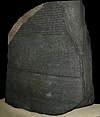 | 33 | The Rosetta Stone | Egypt | 196 BC | BBC | BM | Dorothy Thompson, Ahdaf Soueif |
 | 34 | Chinese Han lacquer cup | China | AD 4 | BBC | BM | Roel Sterckx, Isabel Hilton |
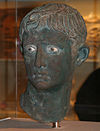 | 35 | Meroë Head or Head of Augustus | Sudan | 27–25 BC | BBC | BM | Boris Johnson, Susan Walker |
Ancient pleasures, modern spice (AD 1–600)[edit]
"Neil MacGregor explores the ways in which people sought pleasure 2,000 years ago."[19] First broadcast week beginning 24 May 2010.
| Image | Number | Object | Origin | Date | BBC website | BM website | Additional contributors |
|---|---|---|---|---|---|---|---|
 | 36 | The Warren Cup | Israel | AD 5–15 | BBC | BM | Bettany Hughes, James Davidson |
 | 37 | North American otter pipe | USA | 200 BC – AD 100 | BBC | BM | Tony Benn, Gabrielle Tayac |
 | 38 | Ceremonial ballgame belt | Mexico | AD 100–500 | BBC | BM | Nick Hornby, Michael Whittington |
 | 39 | Admonitions Scroll | China | AD 500–800 | BBC | BM | Shane McCausland, Charles Powell |
 | 40 | Hoxne pepper pot | England | AD 350–400 | BBC | BM | Christine McFadden, Roberta Tomber |
The rise of world faiths (AD 200–600)[edit]
"Neil MacGregor explores how and when many great religious images came into existence."[19] First broadcast week beginning 31 May 2010.
| Image | Number | Object | Origin | Date | BBC website | BM website | Additional contributors |
|---|---|---|---|---|---|---|---|
 | 41 | Seated Buddha from Gandhara | Pakistan | AD 100–300 | BBC | BM | Claudine Bautze-Picron, Thupten Jinpa |
 | 42 | Gold coin of Kumaragupta I | India | AD 415–450 | BBC | BM | Romila Thapar, Shaunaka Rishi Das |
 | 43 | Silver plate showing Shapur II | Iran | AD 309–379 | BBC | BM | Tom Holland, Guitty Azarpay |
 | 44 | Hinton St Mary Mosaic | England | AD 300 – 400 | BBC | BM | Dame Averil Cameron, Eamonn Duffy |
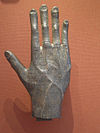 | 45 | Arabian bronze hand | Yemen | AD 100–300 | BBC | BM | Jeremy Field, Philip Jenkins |
The Silk Road and beyond (AD 400–700)[edit]
"Five objects from the British Museum tell the story of the movement of goods and ideas."[19] First broadcast week beginning 7 June 2010.
| Image | Number | Object | Origin | Date | BBC website | BM website | Additional contributors |
|---|---|---|---|---|---|---|---|
| 46 | Gold coins of Abd al-Malik | Syria | AD 696–697 | BBC | BM | Madawi Al-Rasheed, Hugh Kennedy | |
 | 47 | Sutton Hoo helmet | England | AD 600–700 | BBC | BM | Seamus Heaney, Angus Wainwright |
 | 48 | Moche warrior pot | Peru | AD 100–700 | BBC | BM | Grayson Perry, Steve Bourget |
 | 49 | Korean roof tile | Korea | AD 700–800 | BBC | BM | Jane Portal, Choe Kwang Shik |
| 50 | Silk princess painting | China | AD 600–800 | BBC | BM | Yo Yo Ma, Colin Thubron |
Inside the palace: secrets at court (AD 700–950)[edit]
"Neil MacGregor gets an insight into the lives of the ruling elites 1200 years ago."[19] First broadcast week beginning 14 June 2010.
| Image | Number | Object | Origin | Date | BBC website | BM website | Additional contributors |
|---|---|---|---|---|---|---|---|
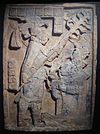 | 51 | Yaxchilan Lintel 24, Maya relief of royal blood-letting | Mexico | AD 700–750 | BBC | BM | Susie Orbach, Virginia Fields |
 | 52 | Harem wall painting fragments | Iraq | AD 800–900 | BBC | BM | Robert Irwin, Amira Bennison |
 | 53 | Lothair Crystal | probably Germany | AD 855–869 | BBC | BM | Lord Bingham, Rosamund McKitterick |
 | 54 | Statue of Tara | Sri Lanka | AD 700–900 | BBC | BM | Richard Gombrich, Nira Wickramasinghe |
 | 55 | Chinese Tang tomb figures, specifically the Tang dynasty tomb figures of Liu Tingxun | China | about AD 728 | BBC | BM | Anthony Howard, Oliver Moore |
Pilgrims, raiders and traders (AD 900–1300)[edit]
"How trade, war and religion moved objects around the globe 1000 years ago."[19] First broadcast week beginning 21 June 2010.
| Image | Number | Object | Origin | Date | BBC website | BM website | Additional contributors |
|---|---|---|---|---|---|---|---|
 | 56 | Vale of York Hoard | England | about AD 927 | BBC | BM | Michael Wood, David and Andrew Whelan |
 | 57 | Hedwig glass beaker | probably Syria | AD 1100–1200 | BBC | BM | Jonathan Riley-Smith, David Abulafia |
 | 58 | Japanese bronze mirror | Japan | AD 1100–1200 | BBC | BM | Ian Buruma, Harada Masayuki |
 | 59 | Borobudur Buddha head | Java | AD 780–840 | BBC | BM | Stephen Bachelor, Nigel Barley |
 | 60 | Kilwa pot sherds | Tanzania | AD 900–1400 | BBC | BM | Bertram Mapunda, Abdulrazek Gurnah |
Status symbols (AD 1200–1400)[edit]
"Neil MacGregor examines objects which hold status and required skilful making."[19] First broadcast week beginning 28 June 2010.
| Image | Number | Object | Origin | Date | BBC website | BM website | Additional contributors |
|---|---|---|---|---|---|---|---|
 | 61 | Lewis Chessmen | probably made in Norway, found in Scotland | AD 1150–1200 | BBC | BM | Martin Amis, Miri Rubin |
 | 62 | Hebrew astrolabe | Spain | AD 1345–1355 | BBC | BM | Sir John Elliott, Silke Ackermann |
 | 63 | Bronze Head from Ife | Nigeria | AD 1400–1500 | BBC | BM | Ben Okri, Babatunde Lawal |
 | 64 | The David Vases | China | AD 1351 | BBC | BM | Jenny Uglow, Craig Clunas |
 | 65 | Taino Ritual Seat | Santo Domingo, Caribbean | AD 1200–1500 | BBC | BM | Jose Oliver, Gabriel Haslip-Viera |
Meeting the gods (AD 1200–1400)[edit]
"Objects from the British Museum show how the faithful were brought closer to their gods."[19] First broadcast week beginning 5 July 2010.
| Image | Number | Object | Origin | Date | BBC website | BM website | Additional contributors |
|---|---|---|---|---|---|---|---|
 | 66 | Holy Thorn Reliquary | France | AD 1350–1400 | BBC | BM | Sister Benedicta Ward, Right Reverend Arthur Roche |
 | 67 | Icon of the Triumph of Orthodoxy | Turkey | AD 1350–1400 | BBC | BM | Bill Viola, Diarmaid MacCulloch |
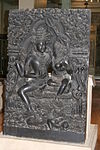 | 68 | Shiva and Parvati sculpture | India | AD 1100–1300 | BBC | BM | Shaunaka Rishi Das, Karen Armstrong |
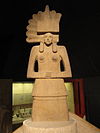 | 69 | Sculpture of Tlazolteotl | Mexico | AD 900 – 1521 | BBC | BM | Marina Warner, Kim Richter |
 | 70 | Hoa Hakananai'a | Easter Island | AD 1000–1200 | BBC | BM | Sir Anthony Caro, Steve Hooper |
The threshold of the modern world (AD 1375–1550)[edit]
"Neil MacGregor explores the great empires of the world in the threshold of the modern era."[19] First broadcast week beginning 13 September 2010.
| Image | Number | Object | Origin | Date | BBC website | BM website | Additional contributors |
|---|---|---|---|---|---|---|---|
 | 71 | Tughra of Suleiman the Magnificent | Turkey | AD 1520–1566 | BBC | BM | Elif Şafak, Caroline Finkel |
 | 72 | Ming banknote | China | AD 1375 | BBC | BM | Mervyn King, Timothy Brook |
 | 73 | Inca gold llama | Peru | about AD 1500 | BBC | BM | Jared Diamond, Gabriel Ramon |
 | 74 | Jade dragon cup | Central Asia | about AD 1420–49 | BBC | BM | Beatrice Forbes Manz, Hamid Ismailov |
 | 75 | Dürer's Rhinoceros | Germany | AD 1515 | BBC | BM | Mark Pilgrim, Felipe Fernandez-Armesto |
The first global economy (AD 1450–1600)[edit]
"Neil MacGregor traces the impact of travel, trade and conquest from 1450 to 1600."[19] First broadcast 20 September 2010.
| Image | Number | Object | Origin | Date | BBC website | BM website | Additional contributors |
|---|---|---|---|---|---|---|---|
 | 76 | Mechanical Galleon | Germany | c. 1585 | BBC | BM | Lisa Jardine, Christopher Dobbs |
 | 77 | Benin plaque: the oba with Europeans | Nigeria | 16th century | BBC | BM | Sokari Douglas Camp, Wole Soyinka |
 | 78 | Double-headed serpent | Mexico | 15th–16th century | BBC | BM | Rebecca Stacey, Adriana Diaz-Enciso |
 | 79 | Kakiemon elephants | Japan | late 17th century | BBC | BM | Miranda Rock, Sakaida Kakiemon XIV |
 | 80 | Pieces of eight | from Spain, found in Bolivia | AD 1589–1598 | BBC | BM | Tuti Prado, William J. Bernstein |
Tolerance and intolerance (AD 1550–1700)[edit]
"Neil MacGregor tells how the great religions lived together in the C16th and C17th."[19] First broadcast week beginning 27 September 2010.
| Image | Number | Object | Origin | Date | BBC website | BM website | Additional contributors |
|---|---|---|---|---|---|---|---|
 | 81 | Shi'a religious parade standard | Iran | Late 17th century | BBC | BM | Haleh Afshar, Hossein Pourtahmasbi |
 | 82 | Miniature of a Mughal prince | India | about AD 1610 | BBC | BM | Asok Kumar Das, Aman Nath |
 | 83 | Shadow puppet of Bima | Java | 1600–1800 | BBC | BM | Mr Sumarsam, Tash Aw |
 | 84 | Mexican codex map | Mexico | Late 16th century | BBC | BM | Samuel Edgerton, Fernando Cervantes |
 | 85 | Reformation centenary broadsheet | Germany | AD 1617 | BBC | BM | Karen Armstrong, Ian Hislop |
Exploration, exploitation and enlightenment (AD 1680–1820)[edit]
"Neil MacGregor on the misunderstandings that can happen when different worlds collide."[19] First broadcast 4 October 2010.
| Image | Number | Object | Origin | Date | BBC website | BM website | Additional contributors |
|---|---|---|---|---|---|---|---|
 | 86 | Akan Drum | from Africa, found in the USA | 18th century | BBC | BM | Bonnie Greer, Anthony Appiah |
 | 87 | Hawaiian feathered helmet | Hawaii | 18th century | BBC | BM | Nicholas Thomas, Kyle Nakanelua |
 | 88 | North American buckskin map | USA | 1774–75 | BBC | BM | Malcolm Lewis, David Edmunds |
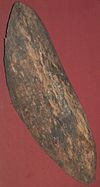 | 89 | Australian bark shield | Australia | 1770 | BBC | BM | Phil Gordon, Maria Nugent |
 | 90 | Jade bi with poem | China | 1790 | BBC | BM | Jonathan Spence, Yang Lian |
Mass production, mass persuasion (AD 1780–1914)[edit]
"How industrialisation, mass politics and imperial ambitions changed the world."[19] First broadcast week beginning 11 October 2010.
| Image | Number | Object | Origin | Date | BBC website | BM website | Additional contributors |
|---|---|---|---|---|---|---|---|
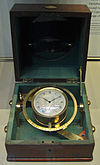 | 91 | Ship's chronometer from HMS Beagle | England | 1795–1805 | BBC | BM | Nigel Thrift, Steve Jones |
 | 92 | Early Victorian tea set | England | 1840–1845 | BBC | BM | Celina Fox, Monique Simmonds |
 | 93 | Hokusai's The Great Wave off Kanagawa | Japan | c. 1829–32 | BBC | BM | Christine Guth, Donald Keene |
 | 94 | Sudanese slit drum | Sudan | 19th century | BBC | BM | Dominic Green, Zeinab Badawi |
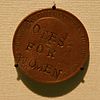 | 95 | Suffragette-defaced penny | England | 1903 | BBC | BM | Felicity Powell, Helena Kennedy |
The world of our making (AD 1914–2010)[edit]
"Neil MacGregor explores aspects of sexual, political and economic history of recent times."[19] First broadcast week beginning 18 October 2010.
| Image | Number | Object | Origin | Date | BBC website | BM website | Additional contributors |
|---|---|---|---|---|---|---|---|
 | 96 | "Kapital", a Russian Revolutionary Plate designed by Mikhail Adamovich | Russia | 1921 | BBC | BM | Eric Hobsbawm, Mikhail Piotrovsky |
| See In the dull village | 97 | Hockney's In the dull village | England | 1966 | BBC | BM | Shami Chakrabarti, David Hockney |
 | 98 | Throne of Weapons | Mozambique | 2001 | BBC | BM | Kofi Annan, Bishop Dinis Sengulane |
| 99 | Sharia-compliant Visa credit card | United Arab Emirates | 2009 | BBC | BM | Mervyn King, Razi Fakih | |
 | 100 | Solar-powered lamp and charger | China | 2010 | BBC | BM | Nick Stern, Aloka Sarder, Boniface Nyamu |
Special editions[edit]
A special radio programme on Radio 4, first broadcast on 18 May 2011, featured one of the many thousands of items nominated on the BBC website by members of the public as an object of special significance.[21] The object chosen to be featured on the programme was an oil painting depicting a young woman that was nominated by Peter Lewis. The painting, which belonged to Lewis' uncle, Bryn Roberts, was painted from a postcard photograph of Roberts' girlfriend (and later wife), Peggy Gullup, by an anonymous Jewish artist for Roberts whilst he was a prisoner of war at Auschwitz in Poland.[22][23]
Another special programme was broadcast on 25 December 2020. Neil MacGregor and a roundtable of guests, comprising Mary Beard, Chibundu Onuzo, Scarlett Curtis, David Attenborough, and Hisham Matar, discussed adding a 101st object to represent how the world has changed in the past decade since the end of the original series.[24] The objects ultimately chosen were the British Museum's collection of 'Dark Water, Burning World' sculptures by Syrian-British artist Issam Kourbaj. They depict small, fragile boats filled with matchsticks - representing the plight of refugees of the Syrian Civil War in particular and migrants in general.
Art Fund Prize[edit]
The British Museum won the 2011 Art Fund Prize for museums and galleries for its part in the A History of the World in 100 Objects series. The prize, worth £100,000, was presented to the museum by Jeremy Hunt, Secretary of State for Culture, Olympics, Media and Sport, in a ceremony at London on 15 June 2011.[25]
The chairman of the panel of judges, Michael Portillo, noted that the judges were "particularly impressed by the truly global scope of the British Museum's project, which combined intellectual rigour and open heartedness, and went far beyond the boundaries of the museum's walls".[26] The judges were also very impressed by the way that the project used digital media in ground-breaking and novel ways to interact with audiences.[26]
Touring exhibition[edit]
During 2016 and 2017 a touring exhibition of many of the one hundred objects, also titled History of the World in 100 Objects, was held in a number of countries and territories, including Australia, Japan, the United Arab Emirates, Taiwan, and China (first at the National Museum of China in Beijing, and then at Shanghai Museum).[27][28] Due to the conditions encountered while touring different countries some exhibits had to be returned to the British Museum for maintenance during tour, and were replaced by other objects from the British Museum collections. Some controversial exhibits were excluded from the exhibition in some countries. Object 90 (Jade bi with poem) was not included in the exhibition held in China because it may have been looted from the Old Summer Palace in Beijing. In addition, a piece of Chinese brocade that had been included in the touring exhibition elsewhere was not included in the exhibition in China because it was collected from the Mogao Caves by Aurel Stein under controversial circumstances.[28]
See also[edit]
- Relic: Guardians of the Museum - Children's tie in of the project.
- Our Top Ten Treasures
- Britain's Secret Treasures
- A History of Ireland in 100 Objects
- List of history podcasts
References[edit]
- ^ Ben Hoyle (18 July 2009). "British Museum and BBC reveal history of world in 100 objects". Times Online.
- "The British Museum strategy to 2012". British Museum.
- "BBC Arts, Music and Culture 2009 – Partnerships and Programmes: The BBC strengthens its commitment to arts and music". BBC. 28 January 2009.
- Leigh Holmwood (28 January 2009). "BBC to put nation's oil paintings online". The Guardian.
- Louise Jury (28 January 2009). "BBC puts art back into focus". London Evening Standard. Archived from the original on 30 January 2009. Retrieved 18 September 2009.
- ^ MacGregor, Neil (2010), A History of the World in 100 Objects, Penguin Books, Limited, ISBN 978-1-84614-413-4
- ^ Pryor, Sally (26 August 2016). "New exhibition opening at the National Museum of Australia in Canberra tells the history of two million years in 100 objects". The Canberra Times. Fairfax Media. Archived from the original on 18 January 2017. Retrieved 18 January 2017.
- ^ Lowrey, Tom (8 September 2016). "A History of the World in 100 Objects explored in National Museum of Australia exhibition". Australian Broadcasting Corporation. Archived from the original on 18 December 2016. Retrieved 18 January 2017.
- ^ Wang, Jie (29 June 2017). "Big queues for fascinating world story told through 100 objects". Shanghai Daily. Retrieved 21 June 2019.
- ^ "Elgin Marbles: UK declines mediation over Parthenon sculptures". BBC News. 8 April 2015. Retrieved 9 April 2015.
- ^ Gillian Reynolds (18 January 2010). "A History of the World in 100 Objects, Radio 4, review". The Daily Telegraph. London.
- ^ a b Neil MacGregor, Programme 1, broadcast 18 January 2010
- ^ Bunz, Mercedes (19 January 2010). "Beyond 100 objects: exploring the BBC's online history of the world". The Guardian. London. Retrieved 23 April 2010.
- ^ "History of the World: Culture Show Special". BBC The Culture Show. 18 January 2010.
- ^ Elisabeth Mahoney (18 May 2010). "A History of the World in 100 Objects". The Guardian. London. Retrieved 10 June 2010.
- ^ Maev Kennedy (14 October 2010). "Radio 4's A History of the World in 100 Objects draws to a close". The Guardian.
- ^ Philip Hensher (15 October 2010). "Philip Hensher: The objects of my affection". The Independent. Archived from the original on 18 October 2010.
- ^ Dominic Sandbrook (11 October 2010). "An object lesson in history from Radio Four". The Telegraph.
- ^ Mirjam, Brusius (May 2020). "100 Histories of 100 Worlds in One Object Conference Report German Historical Institute London Bulletin, Vol 42, No. 1" (PDF). 100 Histories 100 Worlds. Archived (PDF) from the original on 13 May 2021.
- ^ "Project History". 100 Histories of 100 Worlds in One Object. 12 June 2020. Retrieved 28 June 2021.
- ^ TRAFO, Blog for Transregional Research (2019). "100 Histories of 100 Worlds in one Object. An Interview with Mirjam Brusius, Subhadra Das and Alice Stevenson in: TRAFO – Blog for Transregional Research". Trafo Hypotheses. Archived from the original on 16 December 2019.
- ^ 100 Histories of 100 Worlds in 1 Object, Website (2019). "Project Team". 100 Histories 100 Worlds. Archived from the original on 23 October 2020.
- ^ a b c d e f g h i j k l m n o p q r s "A History of the World in 100 objects – Programmes". Archived from the original on 23 September 2010. Retrieved 2 October 2010.
- ^ "A History of the World in 100 objects — Empire Builders (300 BC – 1 AD)". Archived from the original on 28 September 2010. Retrieved 2 October 2010.
- ^ Gillian Reynolds (12 May 2011). "A History of the World Special, Radio 4, preview". The Daily Telegraph.
- ^ "A History of the World Special". BBC Radio 4.
- ^ Jessica Elgot (19 May 2011). "He put colour in her cheeks: did her smile save his life?". Jewish Chronicle.
- ^ "A History of the World: Object 101". BBC Radio 4.
- ^ Mark Brown (15 June 2011). "British Museum wins Arts Fund prize". The Guardian.
- ^ a b "British Museum scoops £100,000 Art Fund Prize and is crowned 'Museum of the Year'". The Art Fund. Archived from the original on 19 June 2011. Retrieved 15 June 2011.
- ^ "International exhibitions: A History of the World in 100 Objects". British Museum. Retrieved 29 January 2018.
- ^ a b Zhao, Xu (27 January 2018). "Global treasures on the Chinese stage". China Daily. Retrieved 29 January 2018.
External links[edit]
- A History of the World, BBC and The British Museum
- A History of the World in 100 Objects (BBC podcasts page)
- A History of the World in Five Minutes (5-minute video summary of the 100 objects)
- Review by Miranda Sawyer in The Observer



